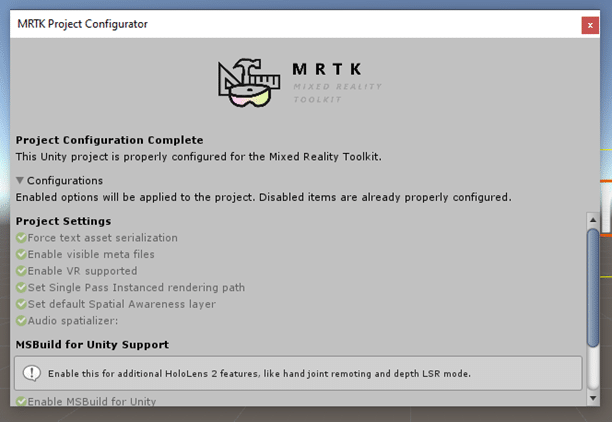
Hololens Series: Hello Hologram
Let’s be honest, holograms are cool. Everyone likes them and would like to have them in their lives. Like in those Science Fictions movies in which the character talks with holographic persons or use holographic objects like if they were real.
Probably many people think that the holograms are just Science Fiction or that the technology necessary for create them only exists in the future. That is kind of true, we will have to wait a few more years to have holograms in our daily life. But it is also true that many companies are working on its development!
Today I want to talk about one of those projects, the Microsoft’s Hololens device.
What is Hololens?
According to the Microsoft's definition: Hololens is what's known as a mixed reality device, a device that tries to blend the real world and digital world.
Hololens allows us to place digital content in the real world and interact with it. Hololens is a device that make us able to enter in the Mixed Reality, a new reality where the physical world and digital world becomes one. Mixed Reality breaks the barriers between human, computer and environment allowing their interaction.
 1. Image Source: https://docs.microsoft.com/en-us/windows/mixed-reality/discover/mixed-reality
1. Image Source: https://docs.microsoft.com/en-us/windows/mixed-reality/discover/mixed-reality
Creating holograms for Hololens
Hololens is a Universal Windows Platform, and that means that a UWP app created for Windows 10 can be easily ported to Hololens and be projected into the real world as a hologram. While this is an impressive functionality, still a 2D object. It is not the 3D hologram everyone wants.
 2. Hololens Emulator for Windows: UWP App
2. Hololens Emulator for Windows: UWP App
To create the beloved 3D holographic object, we need to use other platforms aside of Visual Studio. Platforms that allow us to design 3D objects and configure their behavior. Such Unity (mainly use for game development).
Unity is the fastest way to develop Hololens apps; like any 3D game, we place the object, and apply any required configuration.
To help us with the development of the app, Microsoft provides the Mixed Reality Toolkit (MRTK). A development kit that contains input system, foundational components and building blocks for spatial interaction. Also, it includes some preconfigured tools; 3D buttons, hand tracking and eye tracking are some of them.
In further articles I will be explaining in more detail how to configure Unity and how to create Hololens applications; but the process can be summarized into 3 main steps:
1. Configure the “Build Settings” and import the MRTK to the project

2. Place the object and build the app

3. Deploy to Hololens from Visual Studio
 3. Unity deployed to Hololens Emulator
3. Unity deployed to Hololens Emulator
There are a few open source sample apps than can be downloaded and used for learn how a Hololens app is structured:
• MRTK Examples Hub
https://microsoft.github.io/MixedRealityToolkitUnity/Documentation/README_ExampleHub.html
• Periodic Table of the Elements 2.0
https://medium.com/@dongyoonpark/bringing-the-periodic-table-of-the-elements-app-to-hololens-2-with-mrtk-v2-a6e3d8362158
• Galaxy Explorer 2.0
https://docs.microsoft.com/en-us/windows/mixed-reality/develop/unity/galaxy-explorer-update
Reference Links
https://docs.microsoft.com/en-us/windows/mixed-reality/discover/mixed-reality
https://docs.microsoft.com/en-us/archive/msdn-magazine/2016/november/hololens-introduction-to-the-hololens
https://microsoft.github.io/MixedRealityToolkit-Unity/README.html
Avanade Kansai – Bassam Al-Mahamid
アバナード関西―アルマハミドバッサム
この記事が気に入ったらサポートをしてみませんか?
